
May 15, 2019
Train Valley 2 - flazm
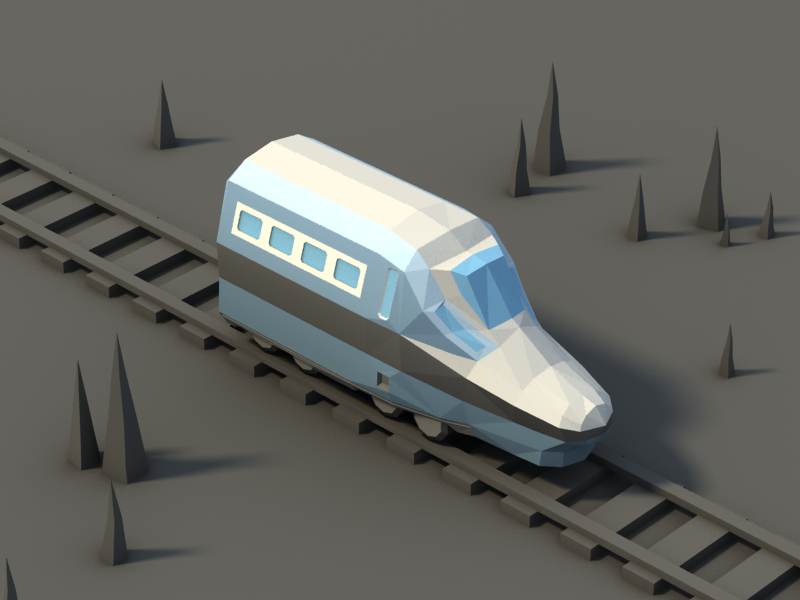 Good day, train lovers! The day has come: we have arrived at the final station, where the last locomotive is waiting for you, the one that inspired us to create a game model. We have come a long way and at the end of it we get such a bright specimen of the railway progress. If you have played first Train Valley, you probably remember its predecessor, the fastest green handsome Shinkansen E5. Today we will meet its younger relative: Shinkansen E6 Series!
Good day, train lovers! The day has come: we have arrived at the final station, where the last locomotive is waiting for you, the one that inspired us to create a game model. We have come a long way and at the end of it we get such a bright specimen of the railway progress. If you have played first Train Valley, you probably remember its predecessor, the fastest green handsome Shinkansen E5. Today we will meet its younger relative: Shinkansen E6 Series!The Bullet Trains - E6 Series Shinkansen
If we’re talking about high-speed trains, there’s only one place where this trip should end to come full circle: the very place where they started speeding up, that is, Japan. The first true high-speed train was the Tokaido Shinkansen, which began service in 1964 just a few days before the Tokyo Olympics. It was a real revolution! For the first time, it was possible to go back and forth Tokyo and Osaka, the two largest Japanese cities, in the same day: it started as a 4 hours trip, but in just a few months they managed to shorten it to three hours and ten minutes. This train was quickly nicknamed “the Bullet Train” for the bullet-like shape of its nose. It was an immediate success – so much that it changed the whole way of making business in Japan, and the life of the Japanese as a whole since it allowed day work trips between these two capital cities for their economy. In less than three years it reached the 100 million passenger mark – and an impressive figure of one billion passengers in 1976. Its success convinced the authorities to extend the high-speed rail network – and it was a living example of success that helped to convince the world of the advantages of high-speed rails. Without the shade of a doubt, this is one of the many instances of train transportation well implemented changing society for good.
 (Photo from Wikipedia)
(Photo from Wikipedia)The E6 series is their latest evolution. The first bullet trains ran at a maximum of 210 km/h; today’s Shinkansen are capable of reaching a max speed of 320 km/h. In order to reach their famed speed and regularity, the Shinkansen employs some of the most advanced technology. For a start, their rail lines are completely separated from conventional lines and designed to help trains reach their full potential with as few curves as possible. It has the usual Bo’Bo’ wheel arrangement of these trains; its engines use (via pantograph) a highly powered overhead in order to overcome the limitations of the direct current that power the Japanese electrified rails.
We’re talking about engines because, as happens with lots of high-speed trains, the E6 Shinkansen doesn’t have a locomotive as such; instead, each car is individually powered, which allows for faster acceleration and deceleration. This is very important for the Shinkansen since it has more stops than any other high-speed train in the world; it needs that extra kick so as not to lose too much time with every stop. And the living testament of the advanced technology of the Shinkansen is its safety: in his whole history, the Shinkansen trains never have had an accident. The E6 series, the one operating as of today, started its service in March 2013 and has no expiration date yet.
Its in-game counterpart has the same sleek, nimble features that make the Bullet Trains look like something directly from a sci-fi movie… and of course, its iconic bullet-shaped nose. This train is ready to take you all the way to the future without even slowing down – and in the most comfortable ride of your life too!
In the past months, we’ve come a long way. We started our trip in the early days of train transportations, discovering some of the iconic locomotives of the Steam Golden Era. We saw these monsters of coal and smoke evolving into faster and more efficient machines, then switching to diesel to travel through mountains and plains all across the world. As time passed trains became cleaner with electric-powered locomotives; then high-speed trains came and started spreading all over the world. And afterward? Who knows what the future will bring, but this we know: there will be trains in it!
It’s been a wonderful journey: we’ve enjoyed a lot writing this historical vignettes, and we hope you had fun discovering the trains that inspired the ones you can use in the game. Thanks a lot for joining us for this trip and for playing Train Valley 2, of course. May your trains run fast, safe, and on time!
----
:tvhook: Train Valley 2 Discord Server.
:tv2computer: Our Twitter.




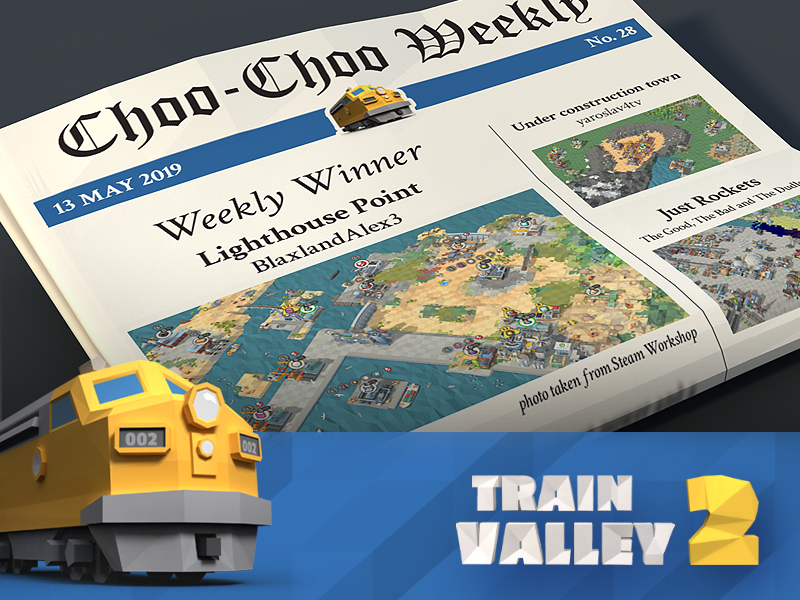 Hello everyone! The latest edition of Choo-Choo Weekly is at your doorstep, and there are fresh winners in it, ruddy like morning croissants in a bakery across the road. Pour coffee or fresh tea and get ready to discover the most outstanding works in our workshop this week. Let's go!
Hello everyone! The latest edition of Choo-Choo Weekly is at your doorstep, and there are fresh winners in it, ruddy like morning croissants in a bakery across the road. Pour coffee or fresh tea and get ready to discover the most outstanding works in our workshop this week. Let's go!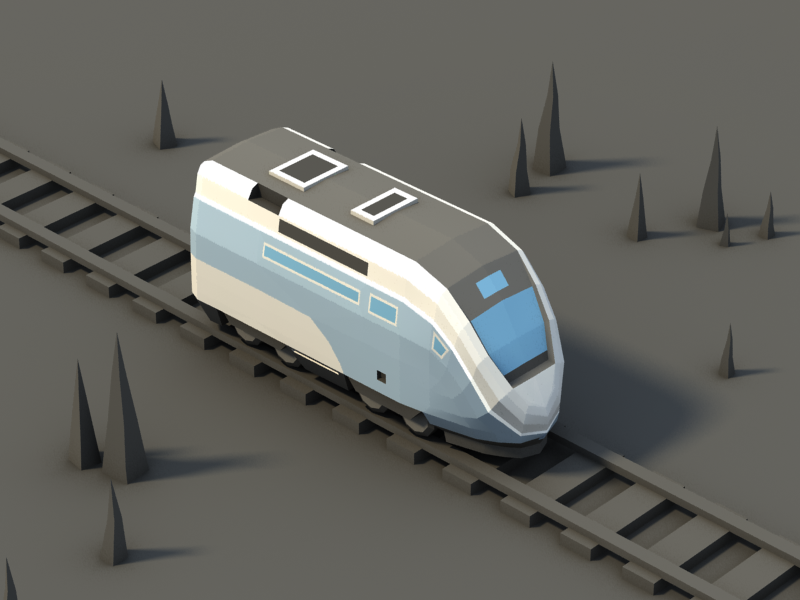 Good day, train lovers! This is the last station before our final destination: today and in the next post, we’ll have a look at the historical counterparts of the very last two locomotives you can find in Train Valley 2. We’re looking into present day now: these are trains that you can easily find and ride. Comparatively clean, insanely fast, and safest than ever, today’s trains are small moving marvels of cutting-edge technology. For the first leg of this journey we’re going to France, so brace yourselves, for this train goes really fast!
Good day, train lovers! This is the last station before our final destination: today and in the next post, we’ll have a look at the historical counterparts of the very last two locomotives you can find in Train Valley 2. We’re looking into present day now: these are trains that you can easily find and ride. Comparatively clean, insanely fast, and safest than ever, today’s trains are small moving marvels of cutting-edge technology. For the first leg of this journey we’re going to France, so brace yourselves, for this train goes really fast! (Photo from
(Photo from 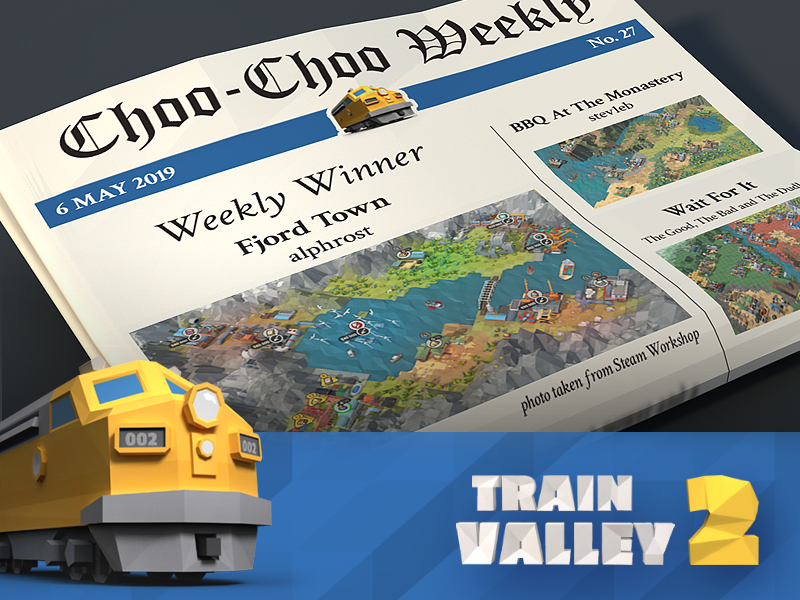 Welcome, friends! The latest issue of Cho-Cho Weekly is with you, in which we, as always, want to tell you about new works in the workshop. They are all very colorful and interesting, just like spring gardens in
Welcome, friends! The latest issue of Cho-Cho Weekly is with you, in which we, as always, want to tell you about new works in the workshop. They are all very colorful and interesting, just like spring gardens in 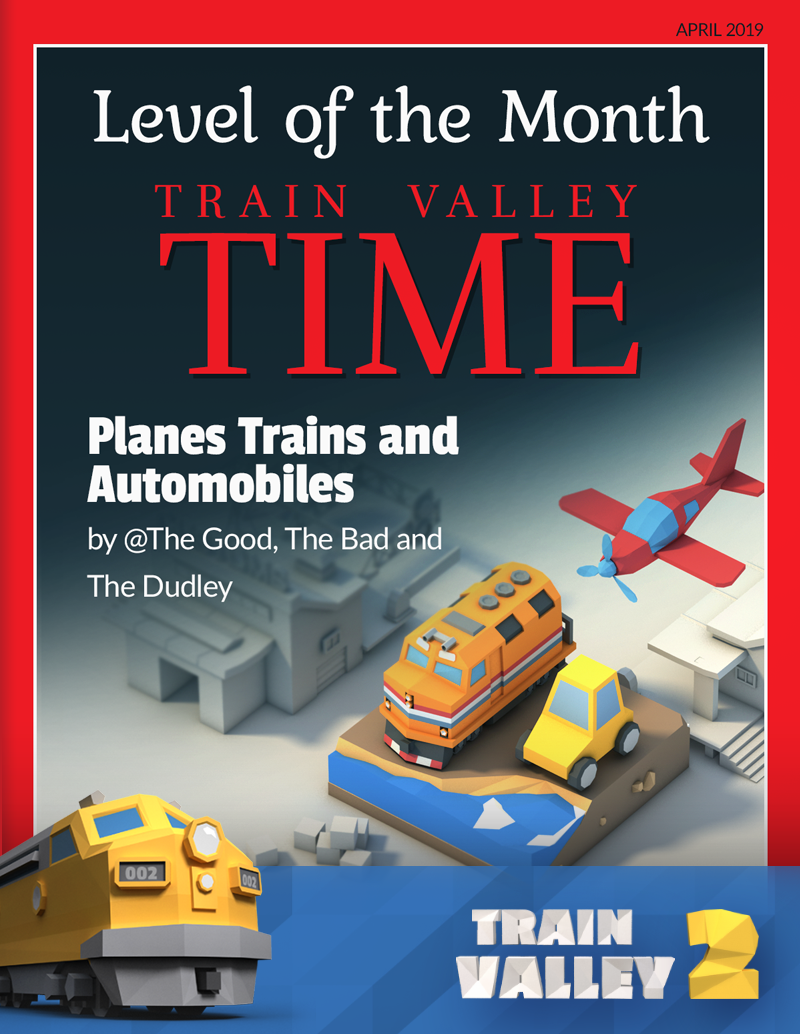 Hello friends! It's time to name the best level of April. And it is the triumphal return of Maestro Dudley and all his Planes, Trains and Automobiles!
Hello friends! It's time to name the best level of April. And it is the triumphal return of Maestro Dudley and all his Planes, Trains and Automobiles!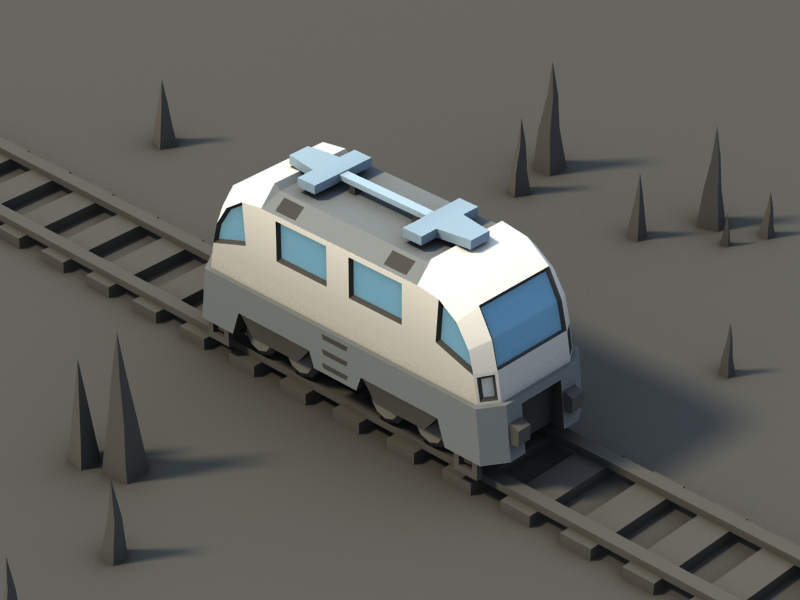 Good day, train lovers! It’s been a truly exciting week for us since Train Valley 2 departed from Full Release Station, but it was but another stop. The journey continues: today we resume our trip through the history of locomotives... which is, actually, also about to reach its final destination. In our last historical vignette,
Good day, train lovers! It’s been a truly exciting week for us since Train Valley 2 departed from Full Release Station, but it was but another stop. The journey continues: today we resume our trip through the history of locomotives... which is, actually, also about to reach its final destination. In our last historical vignette, 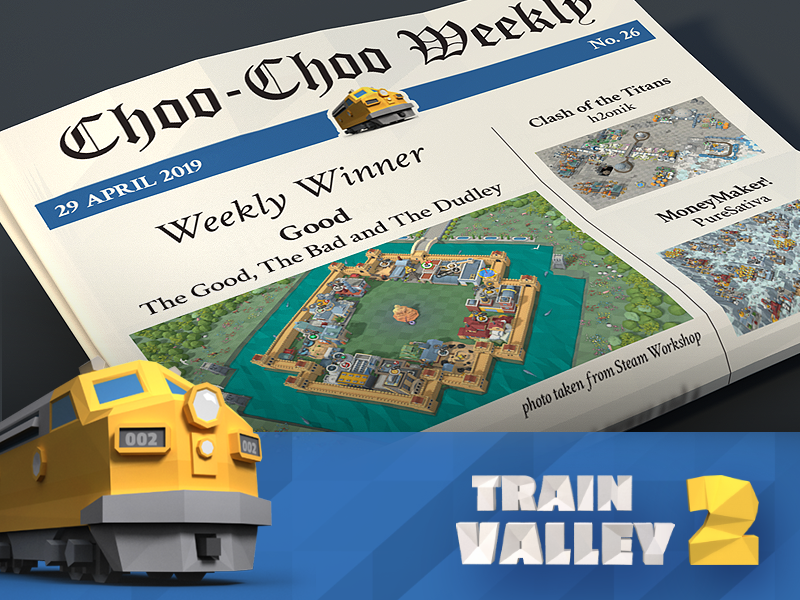 Hello, friends! The latest issue of Choo-Choo Weekly is here. It seems that many have finished the main campaign and are charged with ideas for the use of new mechanics and decorations, many of which are already available in the level editor. Let's see what they did!
Hello, friends! The latest issue of Choo-Choo Weekly is here. It seems that many have finished the main campaign and are charged with ideas for the use of new mechanics and decorations, many of which are already available in the level editor. Let's see what they did!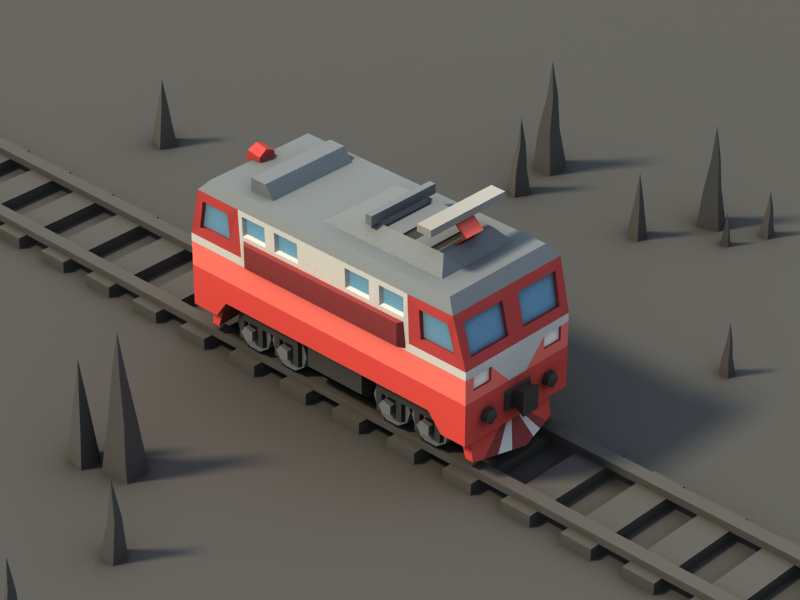
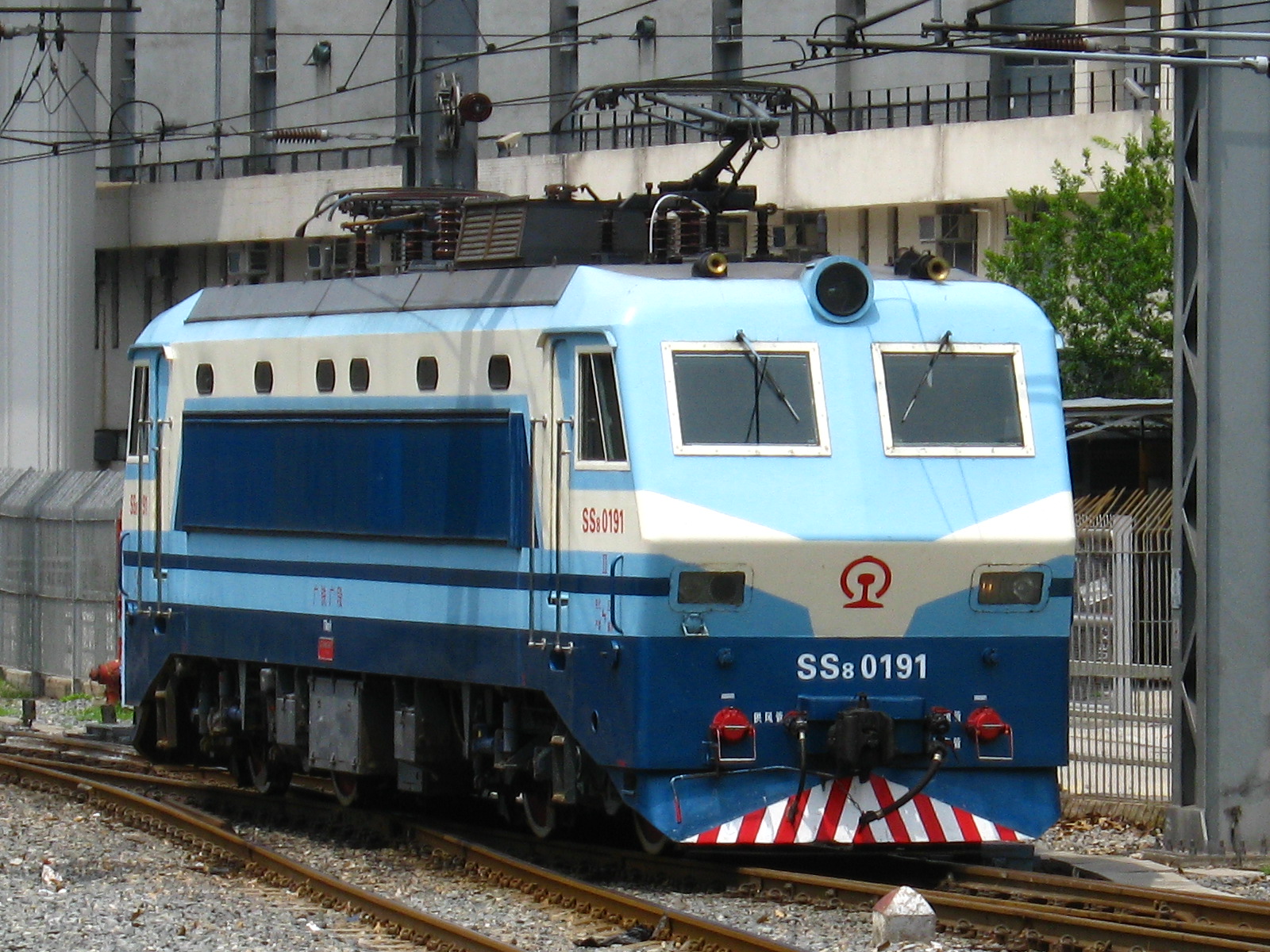 (Photo from
(Photo from 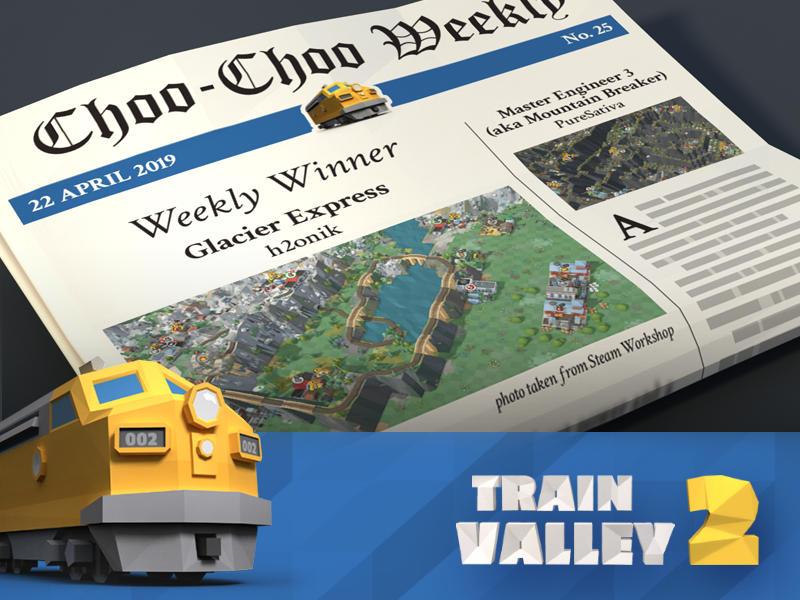 Hello! You have already launched the rocket, haven't you? Of course, many of you are enjoying the spring sun and we totally understand you. Meanwhile, there are new items in the workshop that use new objects from new levels and we can't wait to draw your attention to them. Let’s go!
Hello! You have already launched the rocket, haven't you? Of course, many of you are enjoying the spring sun and we totally understand you. Meanwhile, there are new items in the workshop that use new objects from new levels and we can't wait to draw your attention to them. Let’s go!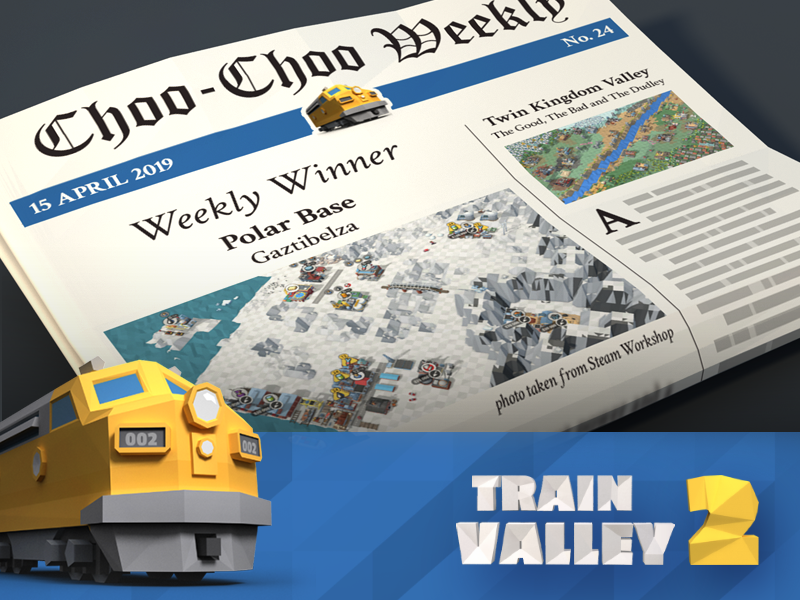 Hello friends! We still come to our senses after a busy weekend, but nothing can cancel the fresh issue of Choo-Choo Weekly. It seems that in the past week, many have focused on the beta test and less often looked into the workshop, but we still have a couple of great levels to add to our Featured list! Let's go!
Hello friends! We still come to our senses after a busy weekend, but nothing can cancel the fresh issue of Choo-Choo Weekly. It seems that in the past week, many have focused on the beta test and less often looked into the workshop, but we still have a couple of great levels to add to our Featured list! Let's go!